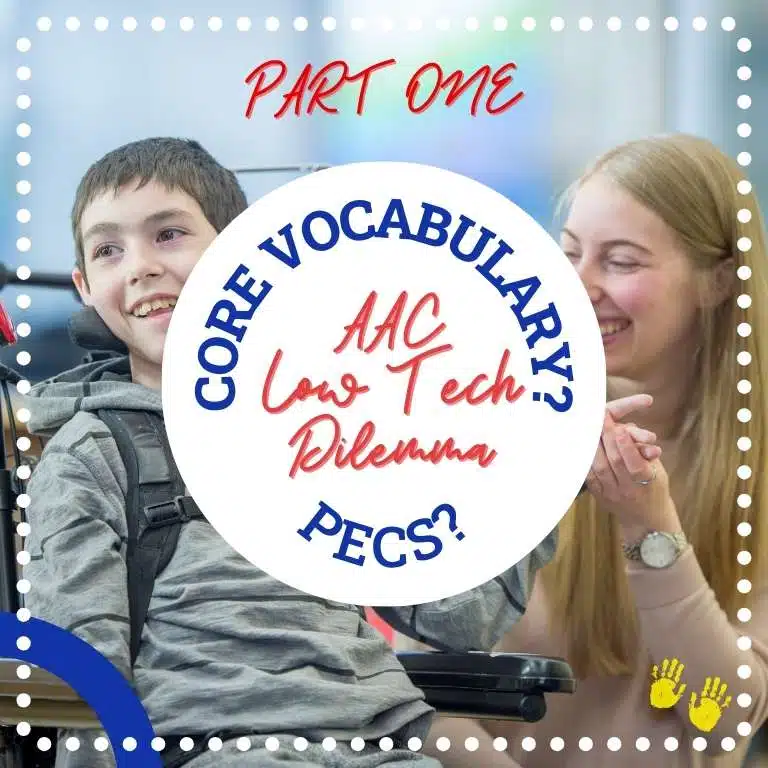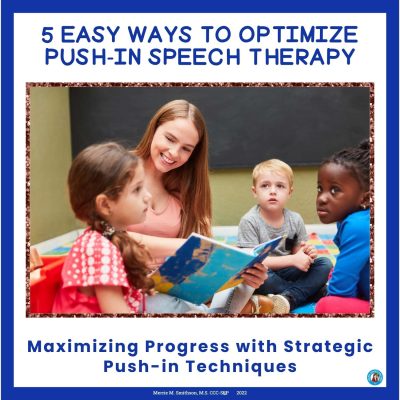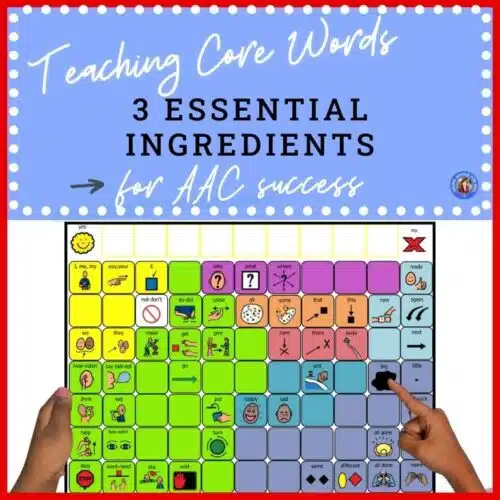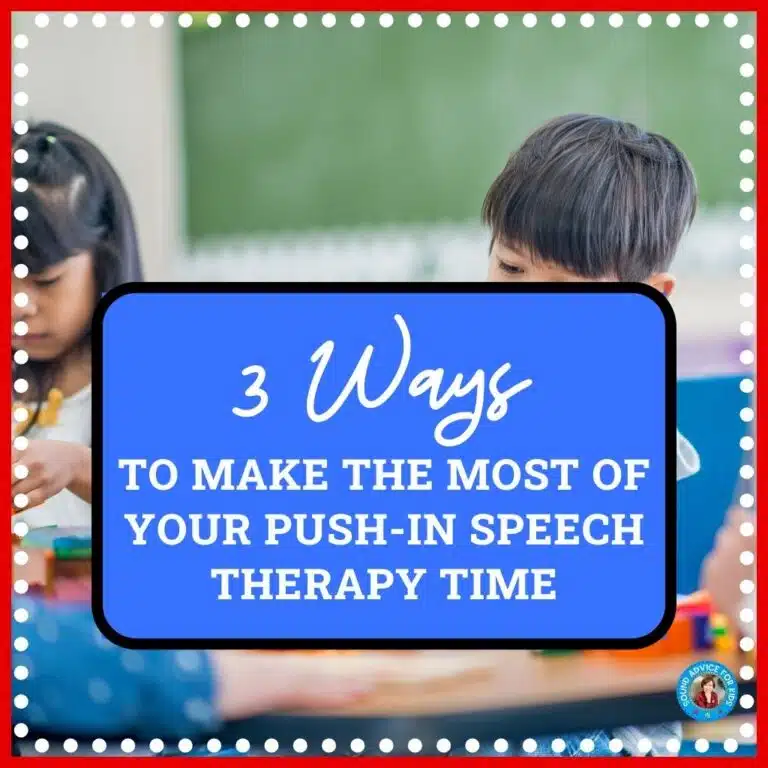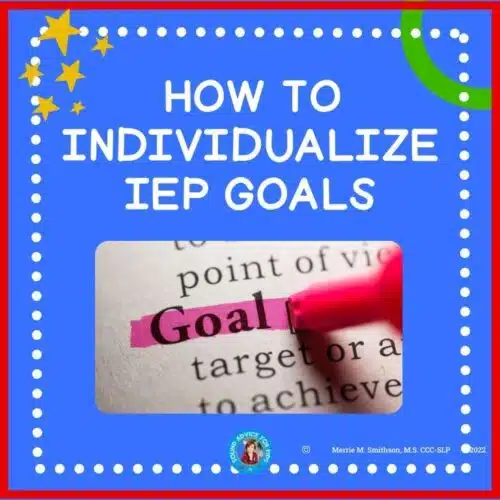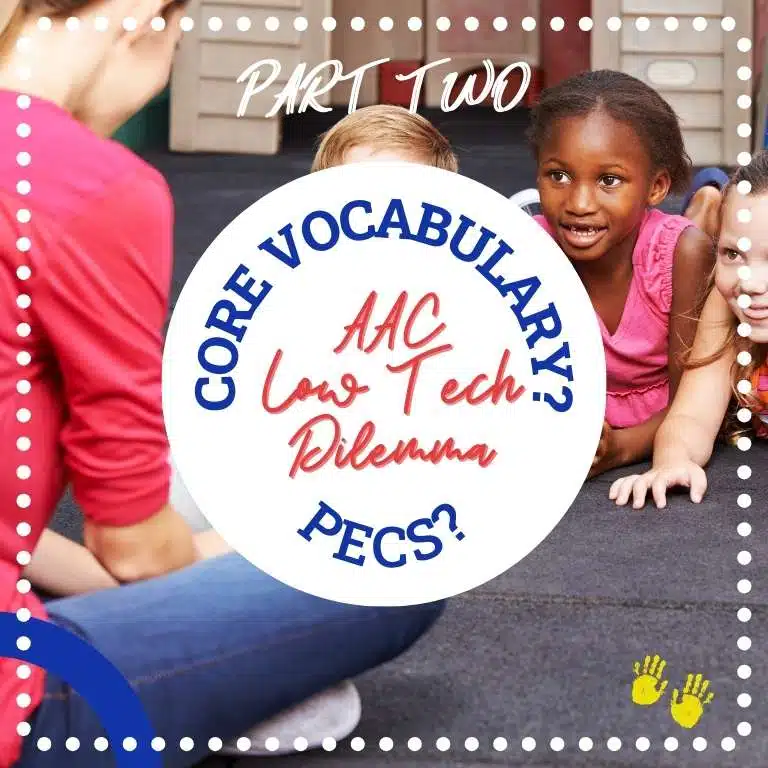Part One
This is Part One of my series on Low Tech Options for AAC. Today, I’ll take a look at the pros and cons of PECS. I’ll review Core Vocabulary in my next post.
PECS: Picture Exchange Communication System
The Picture Exchange Communication System (PECS) is a functional communication system. Andy Body, Ph.D., and Lori Frost, M.S., CCC-SLP initially developed it for preschoolers with autism. In the beginning, a student learns to give a picture of a desired item to a communication partner. Upon receiving the picture, the communication partner gives the child the desired item. There are 6 phases of learning, including teaching the child to discriminate between pictures, bringing the picture to wherever the communication partner is in the room, and building an entire sentence with pictures. Finally, in the later phases of the program, children start to use modifiers, answer questions, and make comments.
PECS is a well-researched, evidence-based system based on B.F. Skinner’s work. People of all ages and various communication delays successfully use PECS. In addition, it facilitates the development of verbal language. Initially, I was trained in the mid to late 1990s during a two-day PECS workshop presented by Pyramid Educational Consultants. I LOVED IT! I soaked it up like a sponge. There was nothing else out there like it.
I faithfully used PECS for the next 15-20 years! I saw so much growth in my language-delayed preschoolers. Many of them were speaking verbally in 2-3 word phrases by the time they left for kindergarten.
To learn more about the 6 levels of training, watch the video below.
LET’S TAKE A LOOK AT THE PROS AND CONS OF PECS
PROS
- It’s a well-thought-out program with a defined set of steps for each level.
- Clear parameters for mastery at each level.
- Teaches the student to initiate communication and interact directly with a communication partner, even if that means going across the room to find them.
- Encourages verbal communication, especially when the student begins combining words into phrases.
- Motivates teachers when students move from one level to another.
- If implemented correctly, the program stays the same from class to class and school to school.
- Excellent for teaching the pragmatic skill of intentional “requesting.”
- Teaches the student to point to words on a sentence strip from left to right. This is a great pre-reading skill!
CONS
- The program requires at least two staff members, especially during the first few levels of the program.
- To receive the complete program materials, one must attend a two-day workshop.
- Physical cues are used frequently during the beginning levels of training.
- It takes a lot of time to prepare materials.
- If an unplanned event occurs, communication pictures won’t be available.
- Pictures are frequently moved to different spots on the page which slows the communication exchange. (Students need time to look for and locate the picture symbols.)
- Aided language stimulation is very limited. Teachers rarely use PECS themselves to communicate with the child.
- Lots of extra materials are needed, such as wind-up toys, edible reinforcers, and individualized motivators for each student.
- Difficult for parents to implement at home.
- Pragmatic skills, such as commenting and asking and answering questions, are more difficult to teach.
- Difficult to engage in communicative turn-taking using Aided Language Stimulation.
- Students with physical limitations will have difficulty using this approach.
- Teaching a student to increase utterance length is possible, but it takes time for students to learn to place the picture on a sentence strip and then hand the picture strip to the communication partner.
- Difficult to transition to a more sophisticated communication device since the student will need to learn an entirely new method of communicating.
Recommendations for when to implement the Picture Exchange Communication System
I think PECS is a useful low-tech option for students who are nonverbal or who have limited language. I’ve had wonderful success with it. However, one approach may be better than another depending on the student and your classroom situation.
In my experience, PECS is preferable when your student needs to learn to initiate communication and engage in joint attention. Since physical guidance and cues are used, make sure your student doesn’t mind being touched. It helps if your student understands the concept of cause/effect and essential that your student can physically manipulate and move the picture cards. Once your student consistently initiates communication, I suggest switching to a core vocabulary approach.
In addition, it is very important to have teacher buy-in and the necessary personnel to implement the program. Otherwise, it’s extremely difficult to teach the student how to use the system. You’ll also need to spend a consistent amount of time in the classroom to check on student progress and determine when to move to the next level. Make sure you have plenty of time and resources to create and purchase the necessary materials. I can’t emphasize this enough!

